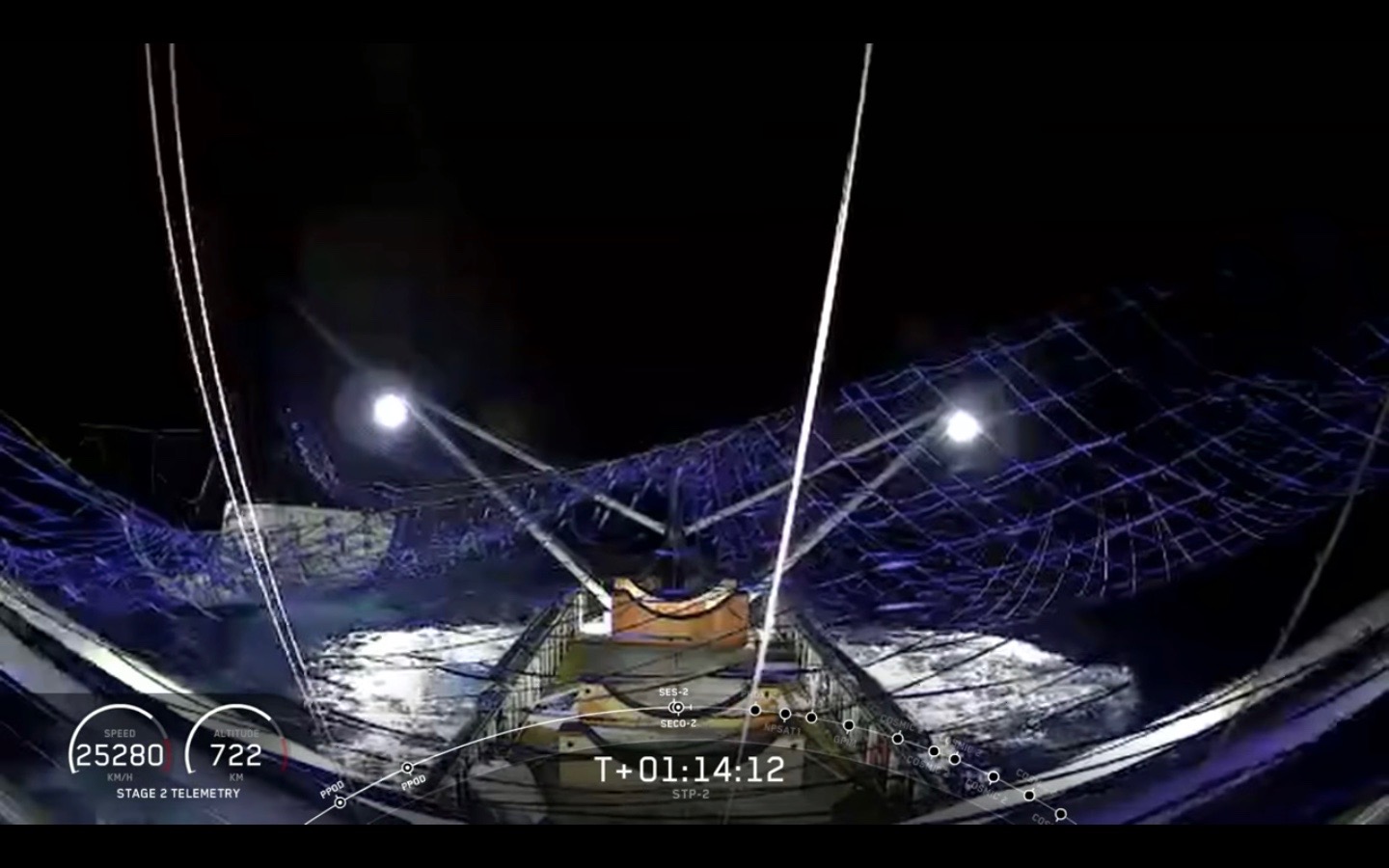SpaceX Boat Snags Falling Payload Fairing in Historic First

SpaceX pulled off a long-sought rocket-reusability milestone during yesterday's epic Falcon Heavy launch.
The company's net-equipped boat, Ms. Tree (formerly known as Mr. Steven), caught the powerful rocket's falling payload fairing off the Florida coast in the wee hours of yesterday morning (June 25), SpaceX representatives said.
This was a first for the speedy boat, which had come close on multiple occasions but had never managed to seal the deal.
Related: SpaceX's Fairing-Catching Boat in Photos
Ms. Tree caught the Falcon fairing!!June 25, 2019
Payload fairings protect satellites during launch and are jettisoned after rockets reach space. The fairings SpaceX uses for the Heavy and the company's workhorse Falcon 9 rocket, which fall back to Earth in two pieces, cost about $6 million each, company founder and CEO Elon Musk has said.
There's thus ample motivation to recover and reuse this expensive hardware. Indeed, SpaceX equips both fairing halves with parachutes and small steering thrusters, to bring the gear down softly and under control.
And that's where Ms. Tree comes in: Snagging the fairing halves before they hit corrosive seawater makes reuse more feasible and cost effective, Musk has said.
Breaking space news, the latest updates on rocket launches, skywatching events and more!
Ms. Tree plucked one fairing half out of the sky yesterday morning, and the other half splashed down in the Atlantic, according to SpaceX launch commentator and principal integration engineer John Insprucker.
"So, another first-time accomplishment for the SpaceX team, especially out there in the middle of the Atlantic," Insprucker said during the mission webcast.
SpaceX already commonly reuses bigger, more expensive rocket parts — namely, the first stages of the two-stage Falcon 9 and Falcon Heavy (which consists of three strapped-together, modified Falcon 9 first stages, with a second stage topping the central booster).
For example, the Heavy's two side boosters already had one flight under their belt before yesterday's mission, which took off from NASA's Kennedy Space Center (KSC) in Florida. And the two first stages aced their touchdowns again yesterday, coming down safely at Landing Zone-1, a SpaceX facility at Cape Canaveral Air Force Station next door to KSC.
The central booster tried to land on a SpaceX drone ship in the Atlantic, hundreds of miles off the Florida coast, but came up just short.
Yesterday's launch, the third-ever flight for the Falcon Heavy, delivered 24 satellites to a variety of orbits over the course of about 3.5 hours. It was the most challenging SpaceX mission to date and perhaps the most complex rocket launch in history, Musk said via Twitter.
- SpaceX's Falcon Heavy: Latest News, Images and Video
- In Photos: SpaceX's 1st Falcon Heavy Rocket Test Launch Success!
- The Evolution of SpaceX's Rockets in Pictures
Mike Wall's book about the search for alien life, "Out There" (Grand Central Publishing, 2018; illustrated by Karl Tate), is out now. Follow him on Twitter @michaeldwall. Follow us on Twitter @Spacedotcom or Facebook.

Michael Wall is a Senior Space Writer with Space.com and joined the team in 2010. He primarily covers exoplanets, spaceflight and military space, but has been known to dabble in the space art beat. His book about the search for alien life, "Out There," was published on Nov. 13, 2018. Before becoming a science writer, Michael worked as a herpetologist and wildlife biologist. He has a Ph.D. in evolutionary biology from the University of Sydney, Australia, a bachelor's degree from the University of Arizona, and a graduate certificate in science writing from the University of California, Santa Cruz. To find out what his latest project is, you can follow Michael on Twitter.
